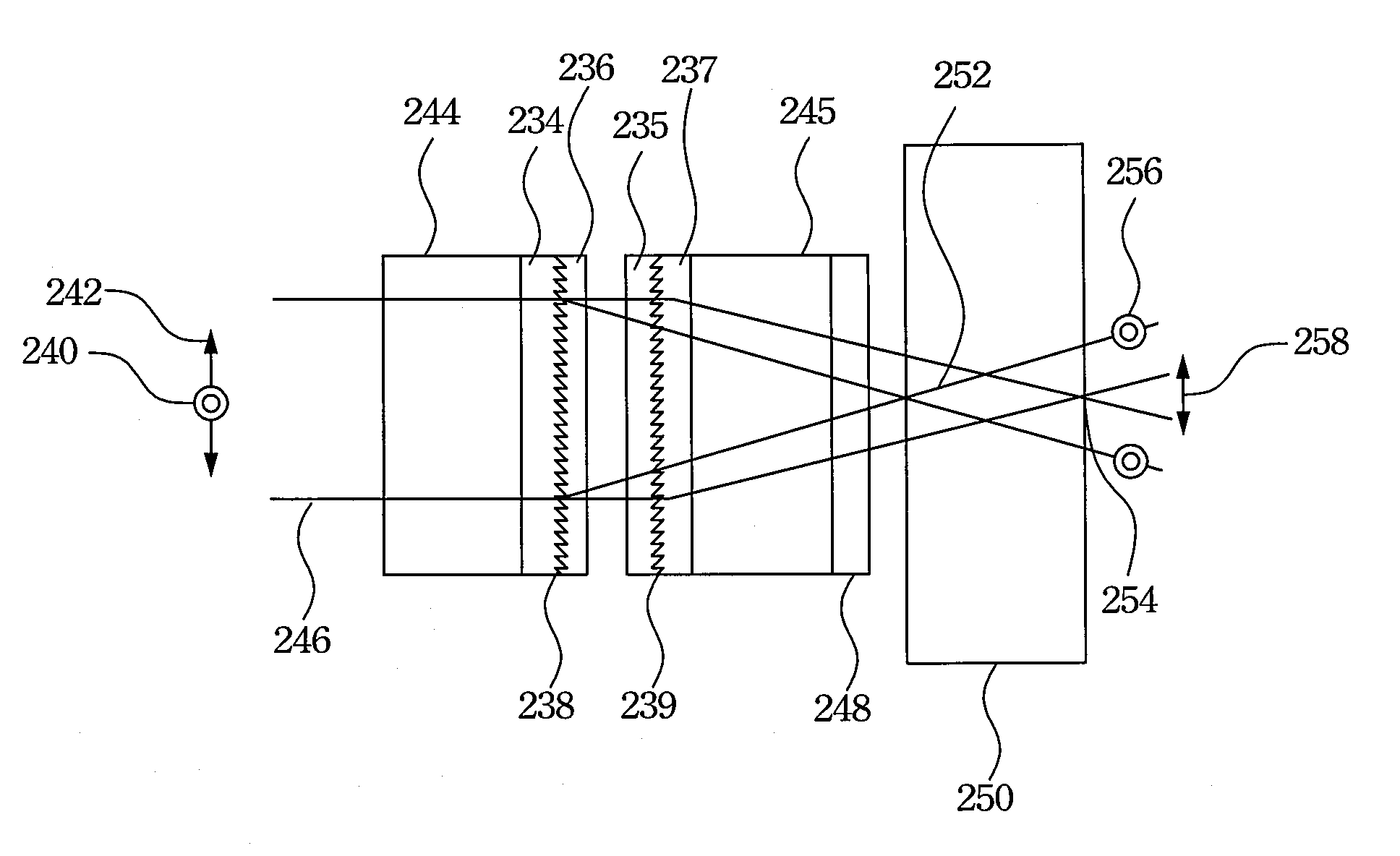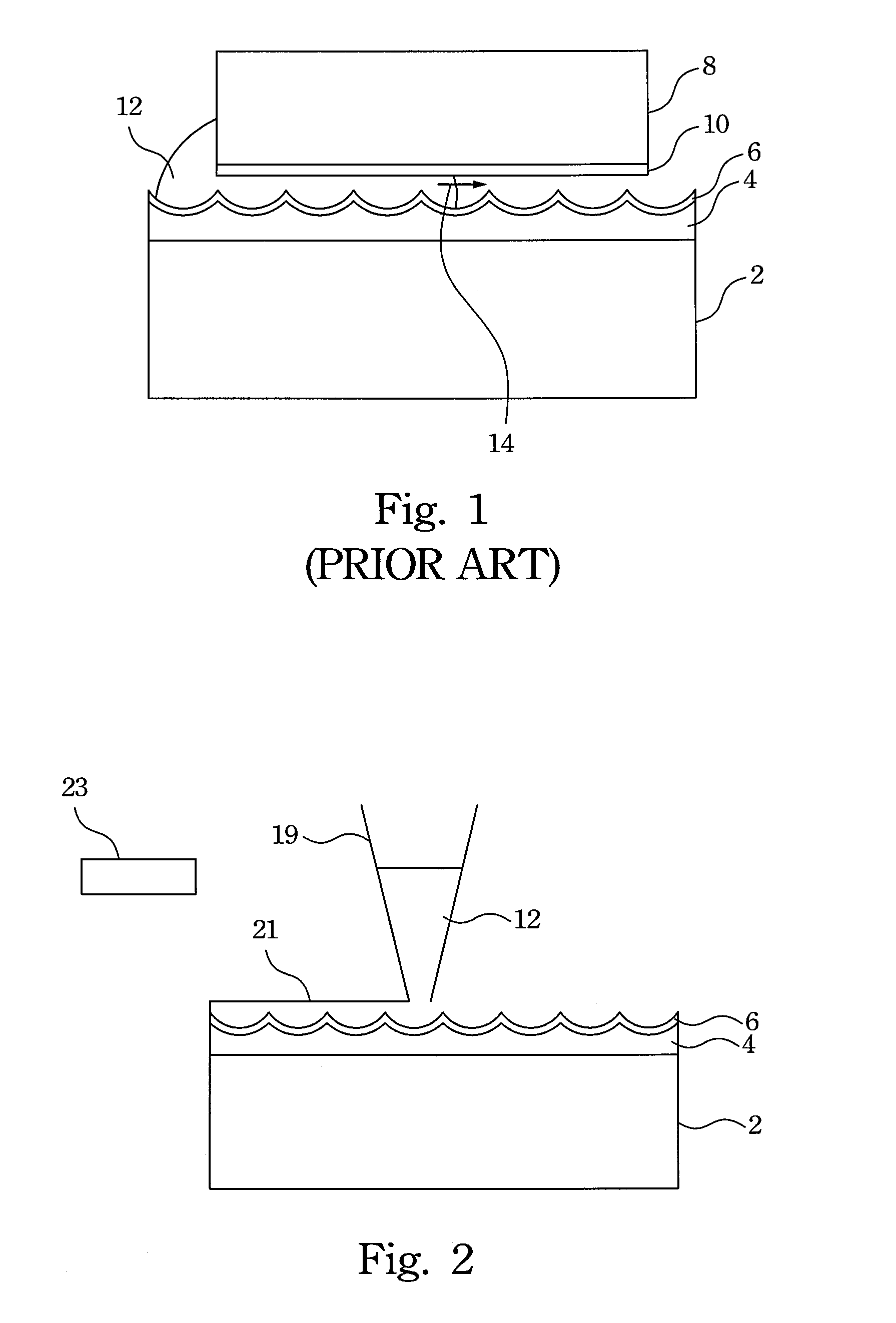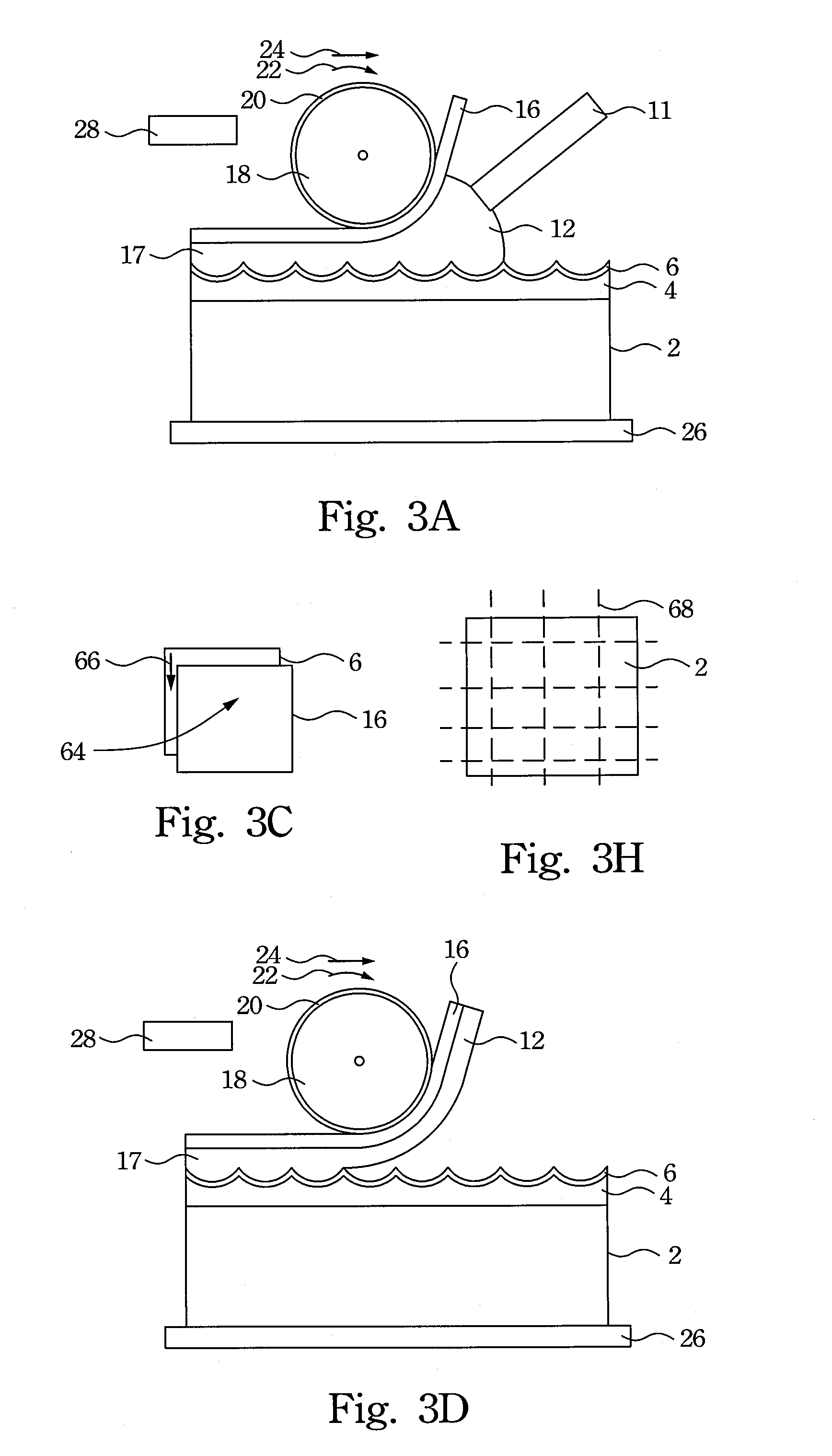Manufacture of a Birefringent Liquid Crystal Component
a liquid crystal component and surface relief technology, applied in the field of surface relief birefringent liquid crystal components, can solve the problems of degrading the alignment properties degrading optical performance, and affecting the quality of liquid crystal materials, so as to reduce fresnel reflection and total internal reflection artifacts, reduce the effect of surface visibility and low surface visibility
- Summary
- Abstract
- Description
- Claims
- Application Information
AI Technical Summary
Benefits of technology
Problems solved by technology
Method used
Image
Examples
Embodiment Construction
[0066]There will now be described with reference to FIG. 3b a method of manufacture of a surface relief birefringent liquid crystal component which may be performed using the apparatus shown in FIG. 3a. The steps shown in FIG. 3b can be carried out in any order, not limited to the order in which they are described below.
[0067]In step 30, a rigid substrate 2, which may be made of glass or a polymer, has a surface relief layer 4 formed on its surface. The surface relief layer 4 comprises a first material which in this example is isotropic and a polymer. The outer surface of the surface relief layer 4 (uppermost in FIG. 3a) is shaped with a surface relief structure, in this case comprising an array of cylindrical lens surfaces. The substrate 2 may alternatively be semi-rigid or flexible, for example when flatness or dimensional stability of the birefringent liquid crystal component is not critical. The substrate 2 may in some cases be of the same material as the isotropic polymer mater...
PUM
 Login to View More
Login to View More Abstract
Description
Claims
Application Information
 Login to View More
Login to View More - R&D
- Intellectual Property
- Life Sciences
- Materials
- Tech Scout
- Unparalleled Data Quality
- Higher Quality Content
- 60% Fewer Hallucinations
Browse by: Latest US Patents, China's latest patents, Technical Efficacy Thesaurus, Application Domain, Technology Topic, Popular Technical Reports.
© 2025 PatSnap. All rights reserved.Legal|Privacy policy|Modern Slavery Act Transparency Statement|Sitemap|About US| Contact US: help@patsnap.com



